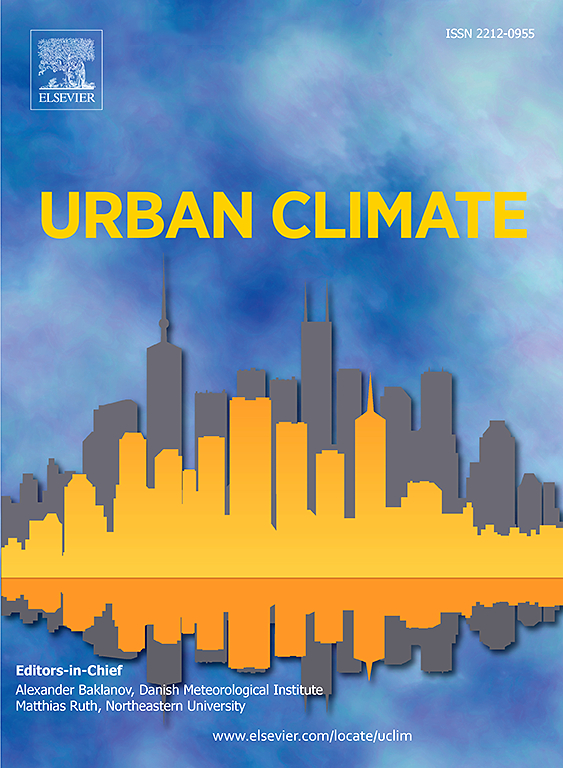Diurnal and seasonal variation of surface heat island of local climate zones using FengYun-4A land surface temperature data
IF 6
2区 工程技术
Q1 ENVIRONMENTAL SCIENCES
引用次数: 0
Abstract
Understanding the diurnal dynamics of the surface urban heat island (SUHI) effect in various local climate zones (LCZs) is essential for urban climate studies and planning. However, due to the limitations in spatial and temporal resolution of satellite data, current research on the continuous diurnal dynamics of LCZs at the scale of urban agglomerations remains relatively limited. This study leverages FengYun-4A (FY-4A) land surface temperature (LST) data to analyze the seasonal and diurnal characteristics of SUHI across different LCZs in the Guangdong-Hong Kong-Macao Greater Bay Area. We resampled the LCZ data and applied bilinear interpolation techniques to match the FY-4A LST data with the resampled LCZ data. We used LCZ D and LCZ A as reference to calculate the SUHI intensity (SUHII), providing a comparative baseline for assessing the SUHI effect across different urban morphologies. Additionally, we compared the LST and SUHII during heatwave periods with those during normal periods. The results indicated that all LCZ types exhibited a typical diurnal variation of SUHI, with SUHII peaking around noon and remaining stable after sunset. The LST generally increased during heat waves, with the SUHII being more pronounced in LCZ types that feature open, flat three-dimensional structures and a higher proportion of impervious surfaces. Our study demonstrates the utility of FY-4A LST data for continuous monitoring and analysis of SUHI effects within urban agglomerations, offering valuable information for urban planning and climate resilience efforts in densely populated urban agglomerations.
求助全文
约1分钟内获得全文
求助全文
来源期刊

Urban Climate
Social Sciences-Urban Studies
CiteScore
9.70
自引率
9.40%
发文量
286
期刊介绍:
Urban Climate serves the scientific and decision making communities with the publication of research on theory, science and applications relevant to understanding urban climatic conditions and change in relation to their geography and to demographic, socioeconomic, institutional, technological and environmental dynamics and global change. Targeted towards both disciplinary and interdisciplinary audiences, this journal publishes original research papers, comprehensive review articles, book reviews, and short communications on topics including, but not limited to, the following:
Urban meteorology and climate[...]
Urban environmental pollution[...]
Adaptation to global change[...]
Urban economic and social issues[...]
Research Approaches[...]
 求助内容:
求助内容: 应助结果提醒方式:
应助结果提醒方式:


